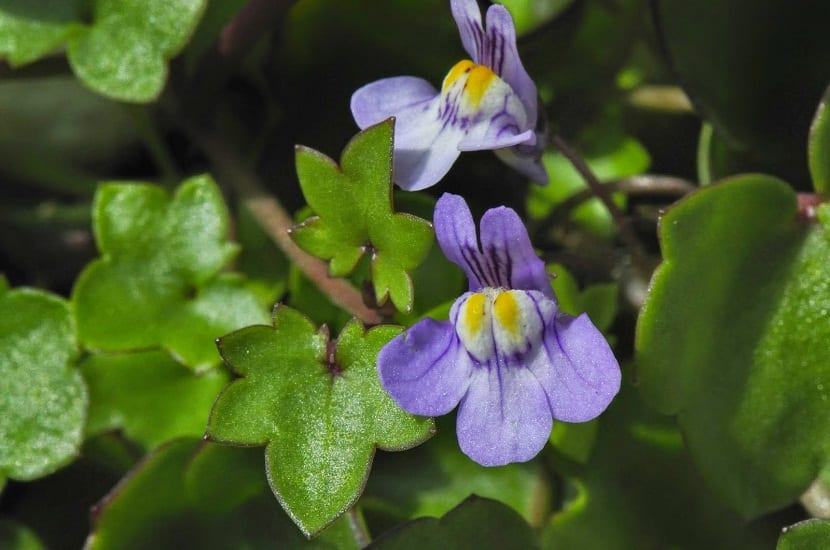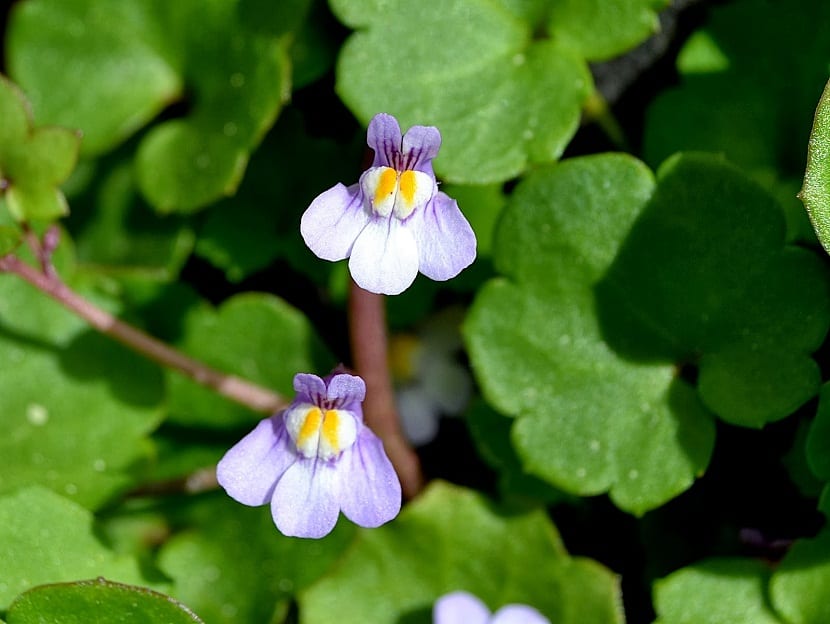
This is a species of plant that has a rare method of propagation. The main stem initially has a phototropism that is positive and moves in the direction of light.
After fertilization, said phototropism becomes negative, this means that it moves away from the light, which makes it much easier for the seeds to fall into the inside of the cracks that are found in the wall or in the rock where the plant is located to later germinate.
Characteristics of the Cymbalaria muralis

This is a long-lasting glabrous plant, which is somewhat hairy and with a few stems that can grow to about 30 cm.
The leaves of this plant can measure about 55 × 65 mm, but in general they can measure about 12 × 15 mm. The growth of these is alternate, having a reniform to semicircular appearanceIn some cases they can be suborbicular and with the margin that is provided with between about 5 to 9 lobes that have a somewhat round or also thin shape, which are usually mucronate.
The flowers of this plant are solitary and grow in the axils of the leaves. The chalice has about five welded sepals, which are tube-shaped, measuring between 2 to 2.5 mm, which is usually opened by about five lobes that are slightly uneven.
The corolla usually has a measurement of between 9 to 15 mm, of a lilac or somewhat purplish color, with a throat that has a yellow color, the tube of this plant has a spur on the part of the base that can reach to measure between 1.5 to 33 mm, a measurement quite similar to that of the calyx and which in turn opens by a pair of lips; the upper one has a bilobed appearance and the lower one is trilobed.
The fruit that this plant produces is a glabrous capsule, with a measure slightly higher than that of the calyx.
Its seeds have a measurement of one millimeter, with an appearance that is ellipsoid or globose in a wide way, black in color, adorned with ribs, which are high as well as sharp and in certain cases a tuber.
Its flowering time occurs in the months of May to September.
Cymbalaria muralis care

This is a plant that usually grows quite fast and are used initially to decorate the walls.
In these, a small hole has to be made for drainage, which can be filled in with some soil from the garden as well as moss. They are the places where the plants are going to be planted, but nevertheless, it is a plant that we can also have in pots as well as in planters.
This is a plant that requires shade or semi-shaded area. On the other hand, the temperatures have to be mild.
It is an undemanding plant with respect to the soil, for them a soil that is capable of retaining moisture is more than enough. To sow this plant we can do it at any time of the year, less in the summer months.
The irrigations are necessary that we do them abundantly, since this it is a plant that needs a lot of humidity; It is recommended that we place some moss, so that it can retain moisture.
It is not necessary that we use a special fertilizer, for this plant it is more than enough with the substrate that you have brought from the beginning. The only thing to keep in mind is that it is of good quality.
Likewise, this is a plant that has the ability to withstand diseases and pests. Its greatest enemy is heat and drought, as this will cause the plant to lose its leaves.